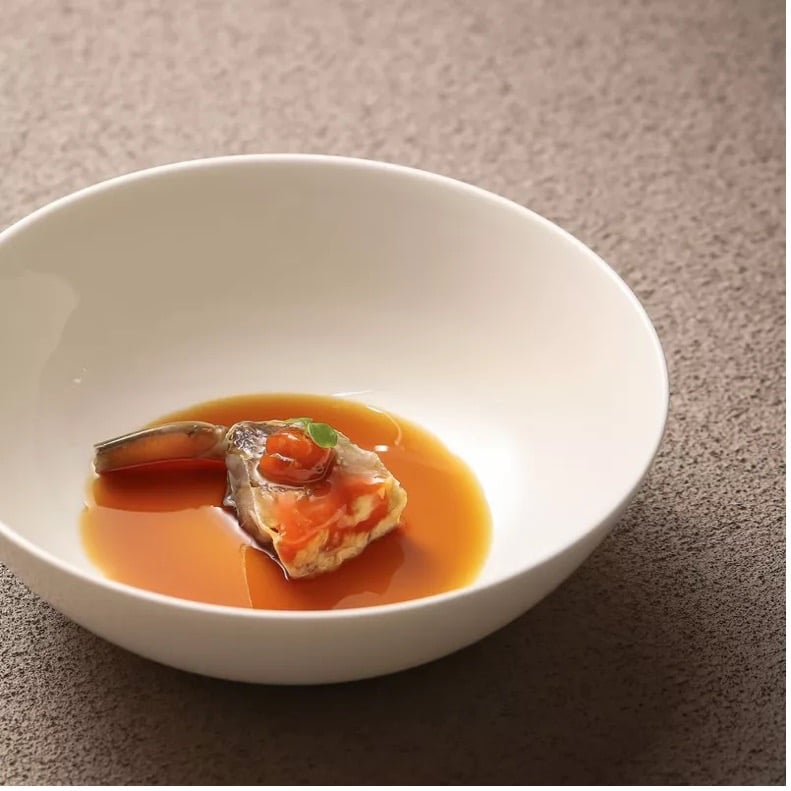China’s culinary renaissance: Michelin’s bold move and the rise of fine dinning.
By
Jingyi Li

Published on
January 30, 2025

In 2024, the Michelin Guide announced it would release provincial restaurant rankings in China for the first time, debuting guides for the coastal provinces of Fujian and Jiangsu. This expansion brings the number of Michelin destinations in mainland China to seven, reflecting a growing recognition of regional culinary diversity and the spread of fine dining beyond tier-one cities like Beijing, Shanghai, and Guangzhou.
While the adaptability of Michelin’s standards in China has sparked debate, the guide’s influence in the culinary world is undisputed. Its inclusion of regional Chinese cuisines highlights the evolving appreciation of local dining traditions and signals a shift toward a broader representation of China’s gastronomic landscape.
The past three years have seen remarkable growth in China’s fine dining sector. In 2023, the market’s value reached RMB 66.5 billion, with approximately 6,835 establishments. Revenues grew 12 percent, and the number of venues climbed 17 percent compared to 2022— a reflection of the growing trend of Chinese fine dining, blending tradition with innovation.
As modern Chinese culinary culture evolves, several questions arise: How does Chinese fine dining balance tradition and innovation? Why is Chinese cuisine thriving despite the country’s economic headwinds? And what lies ahead for this new wave of gastronomy?
What Defines “New Chinese Cuisine”?
High-end Chinese dining continues to explore two main paths: preserving tradition and embracing innovation.
Xin Rong Ji, a Michelin mainstay since 2016, exemplifies the “heritage-driven” approach. Founder Zhang Yong emphasizes a balance of preservation and creativity, stating, “Heritage isn’t about faithfully replicating old recipes but carrying forward a sentiment. Chefs need to absorb the essence of the times, listen to diners, and adapt with an open mind to keep moving forward.” Signature dishes like Xin Rong Ji’s sand-clam bean noodles epitomize this approach—refining local flavors into something exquisitely crafted. Other notable examples include Yong Fu (Ningbo cuisine), Yu Baotang (Fujian cuisine), and Hong 0871 (Yunnan cuisine).



On the other hand, the “innovation-driven” path is best represented by restaurants like Ling Long, led by chef Jason Liu, and Hakkasan, founded by Alan Yau. This style incorporates Western fine dining techniques while maintaining a distinctly Chinese identity. Liu’s creations, for example, merge Chinese ingredients and flavors with Western culinary precision, offering a fresh take on traditional dishes.
Emerging trends include “Chinese Bistro” and “Chinese Omakase,” which borrow from established French and Japanese dining models. However, this fusion sometimes leads to inconsistency, particularly in trend-driven and demanding hubs like Shanghai. As diners become more discerning, the market is expected to weed out subpar offerings, allowing “New Chinese Cuisine” to evolve into a more authentic and sophisticated expression of local food culture.
Chinese Fine Dining: From Luxury to Accessibility
Despite a challenging economic climate, the demand for fine dining experiences remains robust. Shifting consumer preferences now prioritize “affordable refinement” over extravagant luxury. Social media platforms like RedNote reflect this shift, with over 216,000 posts tagged “fine dining,” illustrating growing interest in high-quality yet accessible culinary experiences.

As consumers embrace self-care and value-driven dining, the opportunity for restaurants lies in balancing premium quality with affordability. “Elevating the value of Chinese cuisine is a natural progression as the market matures,” says food industry researcher Wei Hang. Beyond innovative dishes, the focus should also be on improving service and brand image to enhance the global competitiveness of Chinese dining.
The Future of Chinese Cuisine
Collaborations and global expansions are pushing the boundaries of Chinese fine dining. In May 2024, Jason Liu partnered with Shake Shack to create a Michelin-inspired burger and milkshake, showcasing the dialogue between Eastern and Western culinary traditions. Liu remarked, “I enjoy contrasts, like a modern interior in a historic building or Western hospitality paired with Chinese cuisine. These contrasts often create the most compelling stories.”

Photo: Shake Shack
Restaurants like Xin Rong Ji and Yong Fu are also taking exquisite Chinese cuisine abroad. Xin Rong Ji recently opened in Tokyo, introducing seafood from China’s East Sea to a global audience. Similarly, Yong Fu is preparing to launch locations in Singapore, Jeju Island, London, and New York, blending regional Chinese flavors with international culinary elements.
As renowned British food writer Fuchsia Dunlop observed in her book Invitation to the Feast, “In a time of economic competition and international tension, food offers a way to build relationships and explore culture. Chinese cuisine provides another window into understanding China.”
Chinese fine dining is transforming beyond luxury or tradition, evolving into a confident, innovative force poised to captivate global audiences.











